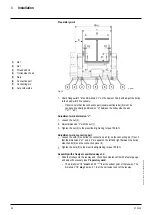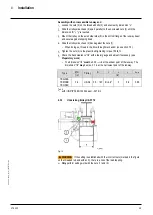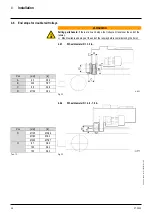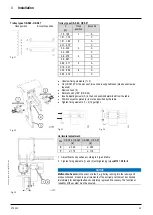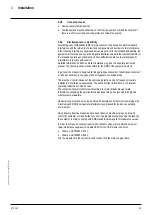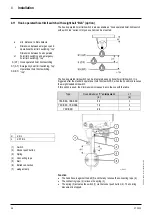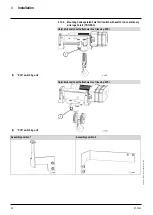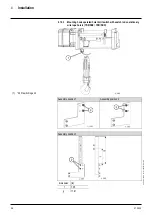
4
Installation
42
07.2020
ba
-o
.2
.6
.0
-us
-3
.2
-ys
|
A1
18
67
50
1 Re
v A
E
4.9.3
Protection of equipment
Protective devices include:
•
Devices for overcurrent protection (fuses, circuit breakers)
•
Motor protection devices
•
Overload safety devices
•
Temperature monitors
•
Limit switches
The protective devices in the electrical equipment installed in the scope of supply must in
no case be removed, replaced by different devices or bridged.
If a protective device has reacted, the hoist must not be put back in service until the
cause has been determined and eliminated with the assistance of a qualified person.
Overcurrent protection devices
Every hoist must have devices for disconnecting and switching the power supply. This
function is performed by the following devices:
4.9.4
Emergency stop
It must be possible to disconnect the system electrically from the operating position. This
function can be provided by:
•
Emergency stop button in the control pendant in conjunction with the crane switch
contactor
•
Main isolator.
4.9.5
Runway conductor disconnecting means
•
must disconnect the wire rope hoist on all poles,
•
must be lockable in OFF position,
•
must be installed in an easily accessible place in the system,
•
must be marked as such to avoid mistakes.
4.9.6
Disconnect switch
Required for one or more hoists,
•
must be lockable in OFF position.
4.9.7
Protective conductor
WARNING
With a missing protective conductor, an electric shock hazard exists. Material damage,
severe injuries or death can result.
➢
Connect the external protective earth system (PE) close to the terminals of the phase
conductor using a protective conductor for each mains connection.
Without a protective earth connection, malfunctions can arise during operation. The
protective earth connection facilitates protective equipotential bonding for protection
against electric shocks, as well as functional equipotential bonding for the avoidance of
electrical interference effects on electronic systems.

